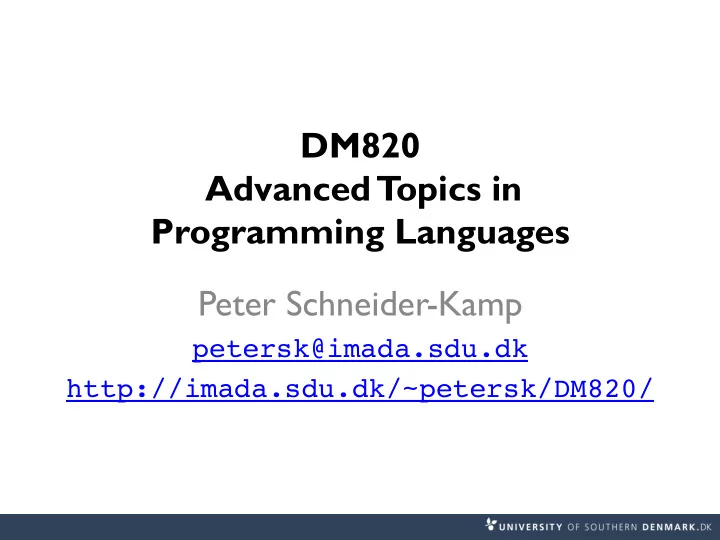

DM820 Advanced T opics in Programming Languages Peter Schneider-Kamp petersk@imada.sdu.dk � http://imada.sdu.dk/~petersk/DM820/ �
MULTI-PARADIGM & CONSTRAINT PROGRAMMING 2 June 2009
Programming Paradigms § Actor programming § Generic programming § Concurrent programming § Imperative programming § Constraint programming § Logic Programming § Dataflow programming § Metaprogramming § Declarative programming § Object-oriented programming § Distributed programming § Rule-based programming § Functional programming § Visual programming 3 June 2009
Multi-Paradigm Languages § Many languages use more than one paradigm: § Java: imperative, object-oriented, reflective, generic § Python: imperative, object-oriented, reflective, functional § C#: imperative, object-oriented, functional, reflective, generic § These combinations are quite straightforward § Multi-paradigm languages combine less obviously combinable programming paradigms: § Curry: constraint, functional, logic, concurrent § Oz: imperative, object-oriented, functional, logic, constraint, distributed, concurrent § How to combine functional and logic programming? § How to integrate constraint programming? 4 June 2009
Declarative Programming § Imperative programming: § commands for HOW to achieve a goal § Declarative programming: § Express WHAT exactly should be achieved § Functional programming (lambda calculus) § Logic programming (predicate calculus) § Constraint programming (constraint satisfaction) 5 June 2009
Constraint Programming § Just provide constraints on a solution § Let the computer figure out how to find solutions § Example (constraint logic programming): puzzle([S,E,N,D] + [M,O,R,E] = [M,O,N,E,Y]) :- Vars = [S,E,N,D,M,O,R,Y], Vars ins 0..9, all_different(Vars), S*1000 + E*100 + N*10 + D + M*1000 + O*100 + R*10 + E #= M*10000 + O*1000 + N*100 + E*10 + Y, M #\= 0, S #\= 0, label(Vars). 6 June 2009
Example: Curry § Belongs to the class of constraint functional logic languages § Syntax very close to Haskell § Named after mathematician Haskell B. Curry § Implementation developed in Portland, Aachen, Kiel (PAKCS) § Applications: § Bibliographic database, Wine manager, Recipe database § Music composition § Web-based learning, Web server scripting § Ecological simulation § Course assignment, Study program management § Graph grammar parsers § … 7 June 2009
Hands-On § Functional programming § Logic programming § Mixed functional-logic programming § Send + more = money 8 June 2009
Recommend
More recommend